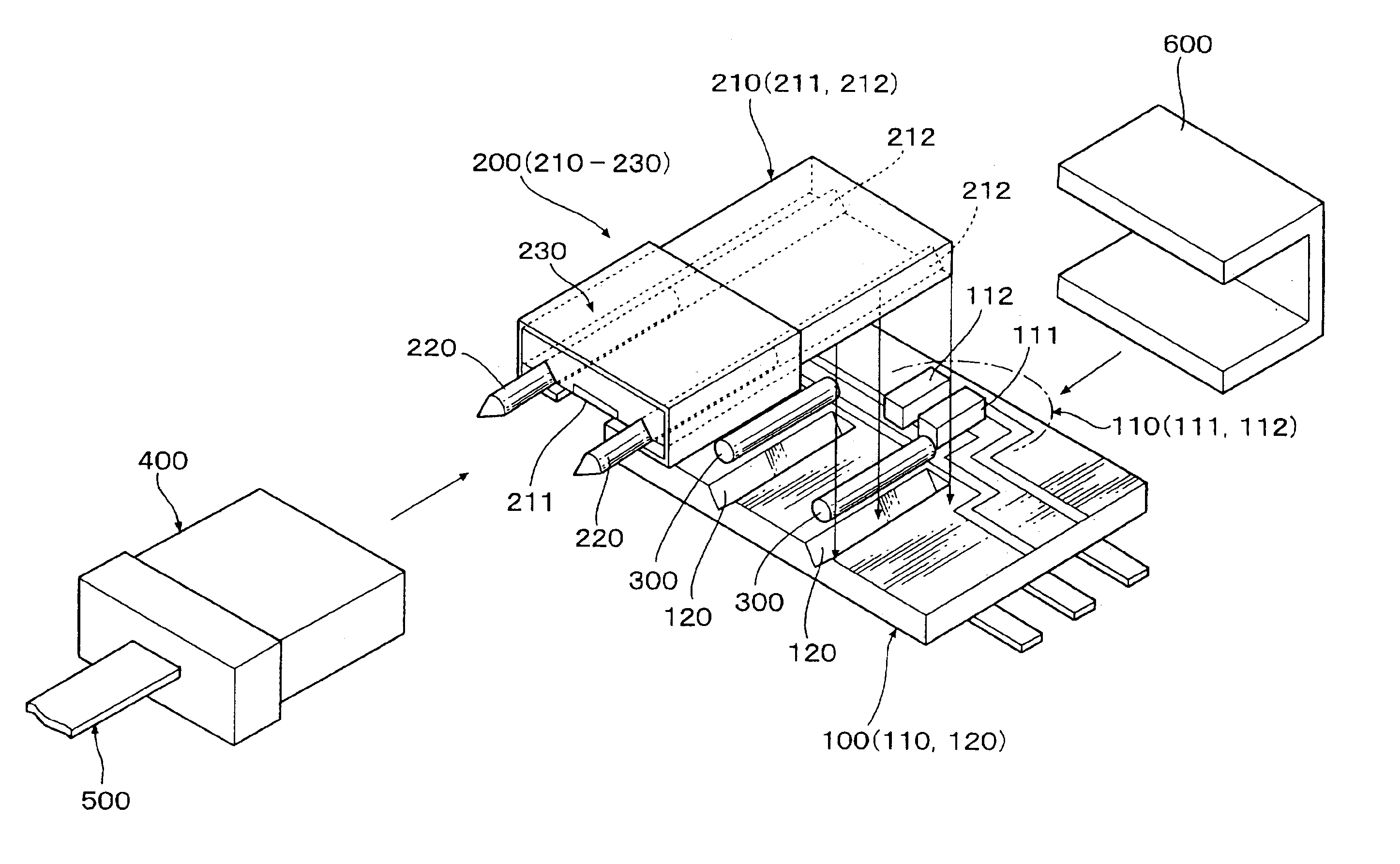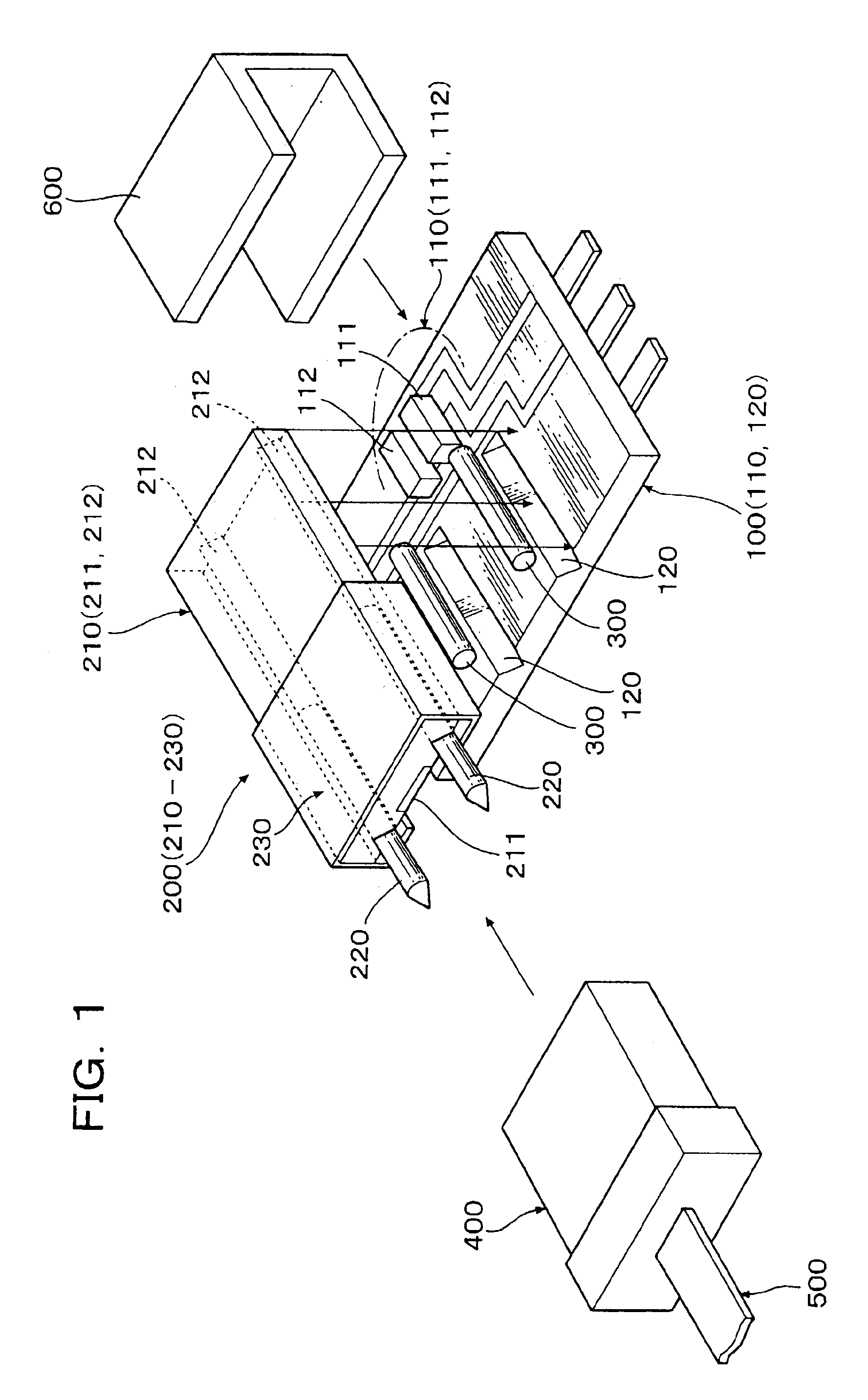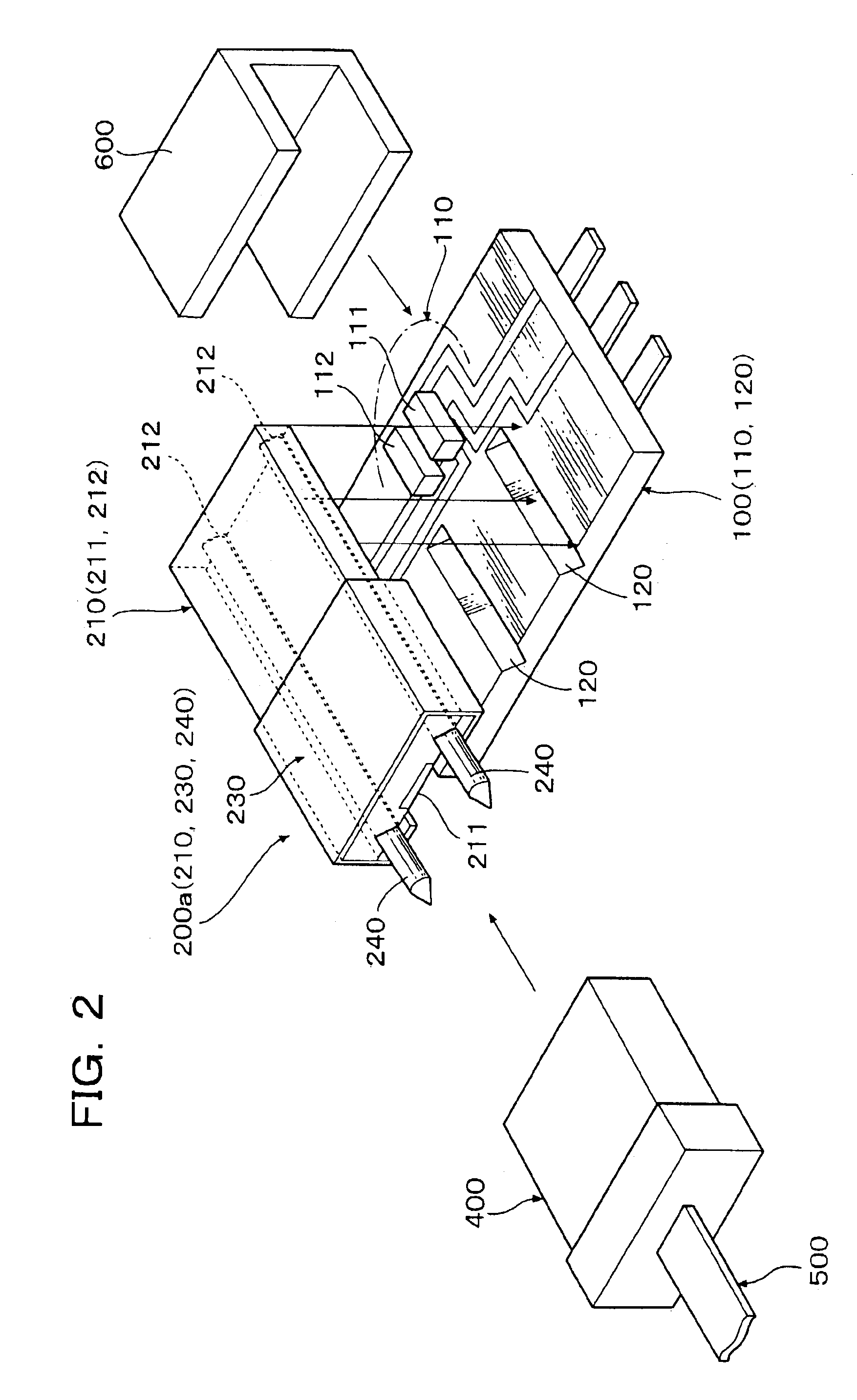Optical connector module
a technology of optical connectors and modules, applied in the field of optical connector modules, can solve problems such as misregistration between wafers, and achieve the effect of preventing misregistration and facilitating registration
- Summary
- Abstract
- Description
- Claims
- Application Information
AI Technical Summary
Benefits of technology
Problems solved by technology
Method used
Image
Examples
second embodiment
FIG. 2 is an exploded perspective view of an optical connector module according to the present invention.
The second embodiment is distinguished from the first embodiment described above in that the connector guide pins 220, of the optical waveguide-side connector 200 and the wafer registration guide pins 300 in the first embodiment are integrally formed with each other to form guide pins 240, respectively, and the guide pins 240 are received in guide pin-receiving V-grooves 212 of an optical waveguide wafer 210, with connector guide pin-corresponding portions of the guide pins 240 being fixedly held by a pin-fixing member 230, thus forming an optical waveguide-side connector 200a.
According to the second embodiment, since each connector guide pin and each wafer registration guide pin are integrally formed with each other and contained in the optical waveguide-side connector 200a, there is no need to handle the wafer registration guide pins as single separate elements as in the case ...
third embodiment
FIG. 3 to an exploded perspective view of an optical connector module according to the present invention.
This embodiment is distinguished from the above second embodiment in which the guide pins 240 and the guide pin-receiving V-grooves 120, 212 for sandwiching the guide pins 240 are arranged along opposite sides of the optical waveguide 211′, in that there are provided not only guide pins 240a disposed along opposite sides of an optical waveguide 211, and guide pin-receiving V-grooves 120a, 212a for sandwiching the guide pins 240a, but also guide pin-receiving V-grooves 130, 213 which are formed orthogonal to the guide pin-receiving V-grooves 120a, 212a, thus forming an optical transmission / reception wafer 100a and an optical waveguide wafer 210a, with an additional member of an wafer registration guide pin 350 for being sandwiched by the guide pin-receiving V-grooves 130, 213.
The above arrangement and configuration provides the advantageous effects of being capable of uniquely con...
fourth embodiment
FIG. 4 is an exploded perspective view of an optical connector module according to the present invention.
In the fourth embodiment, the integrally-formed guide pins 240a in the third embodiment are divided into connector guide pins 220 and wafer registration guide pins 300a, as in the first embodiment. The arrangement and configuration make it possible to use the wafer registration guide pins 300a having a diameter different from that of the connector guide pins 220, which provides the advantages effect of being capable of controlling registration accuracy, wafer interconnection accuracy, and so forth.
Further, similarly, it is also possible to control registration accuracy, wafer interconnection accuracy, and so forth, based on a diameter of the wafer registration guide pin 350 orthogonal to the wafer registration guide pins 300a. The other advantageous effects provided by the fourth embodiment are the same as those obtained by the third embodiment.
PUM
 Login to View More
Login to View More Abstract
Description
Claims
Application Information
 Login to View More
Login to View More - R&D
- Intellectual Property
- Life Sciences
- Materials
- Tech Scout
- Unparalleled Data Quality
- Higher Quality Content
- 60% Fewer Hallucinations
Browse by: Latest US Patents, China's latest patents, Technical Efficacy Thesaurus, Application Domain, Technology Topic, Popular Technical Reports.
© 2025 PatSnap. All rights reserved.Legal|Privacy policy|Modern Slavery Act Transparency Statement|Sitemap|About US| Contact US: help@patsnap.com



